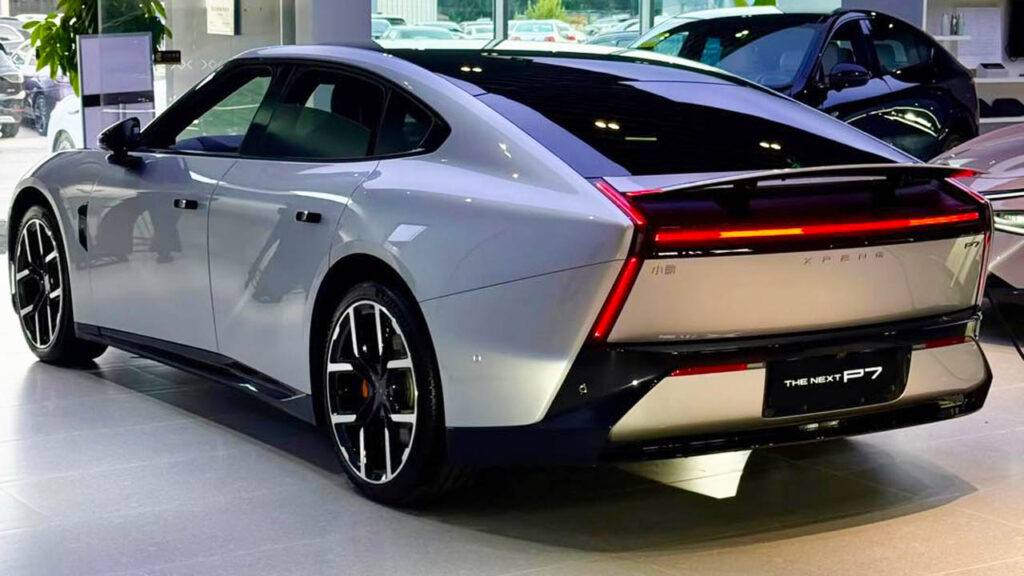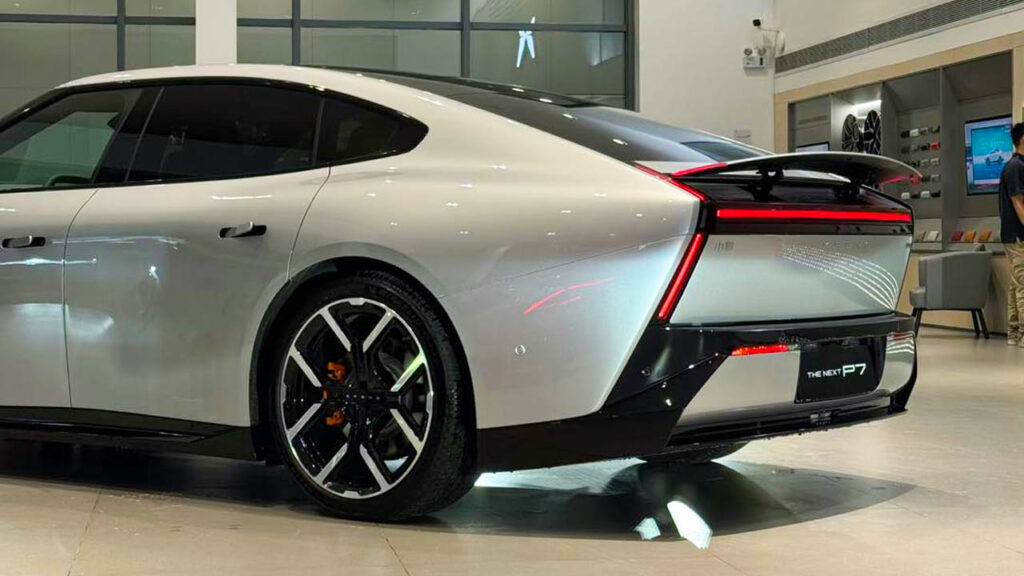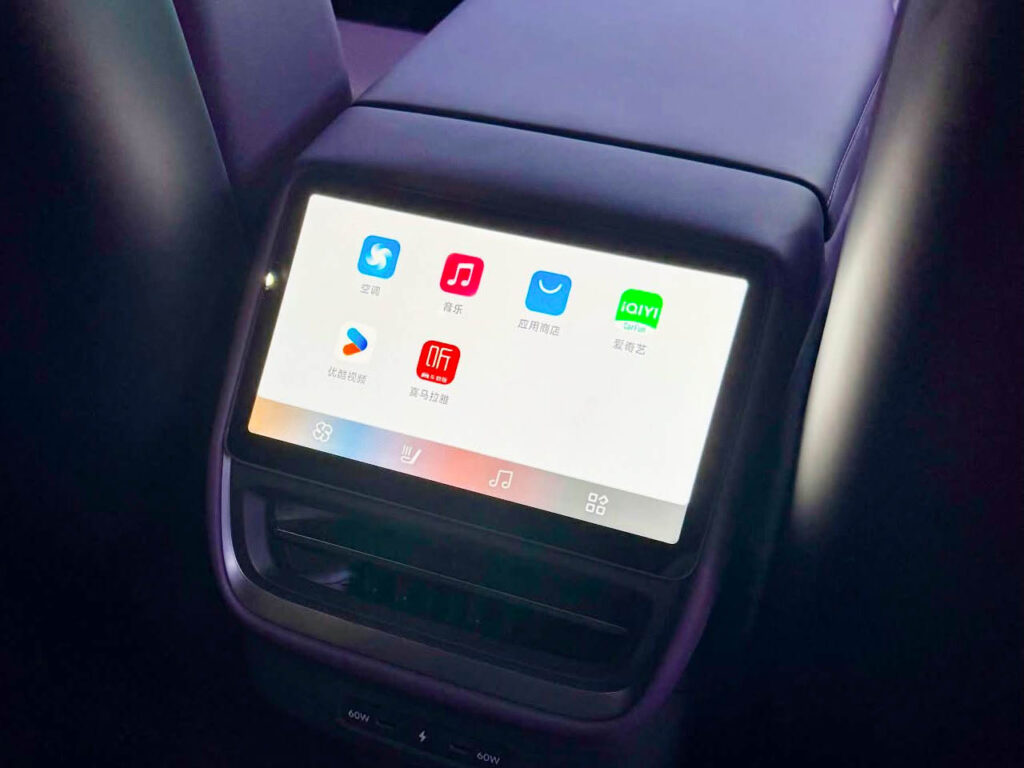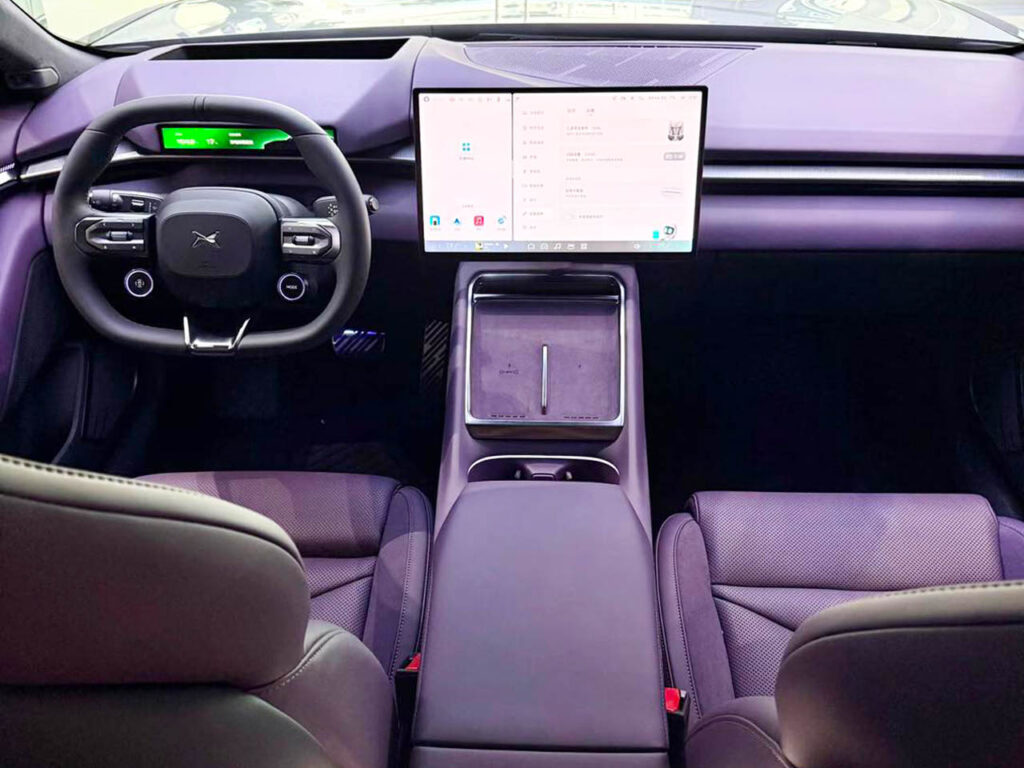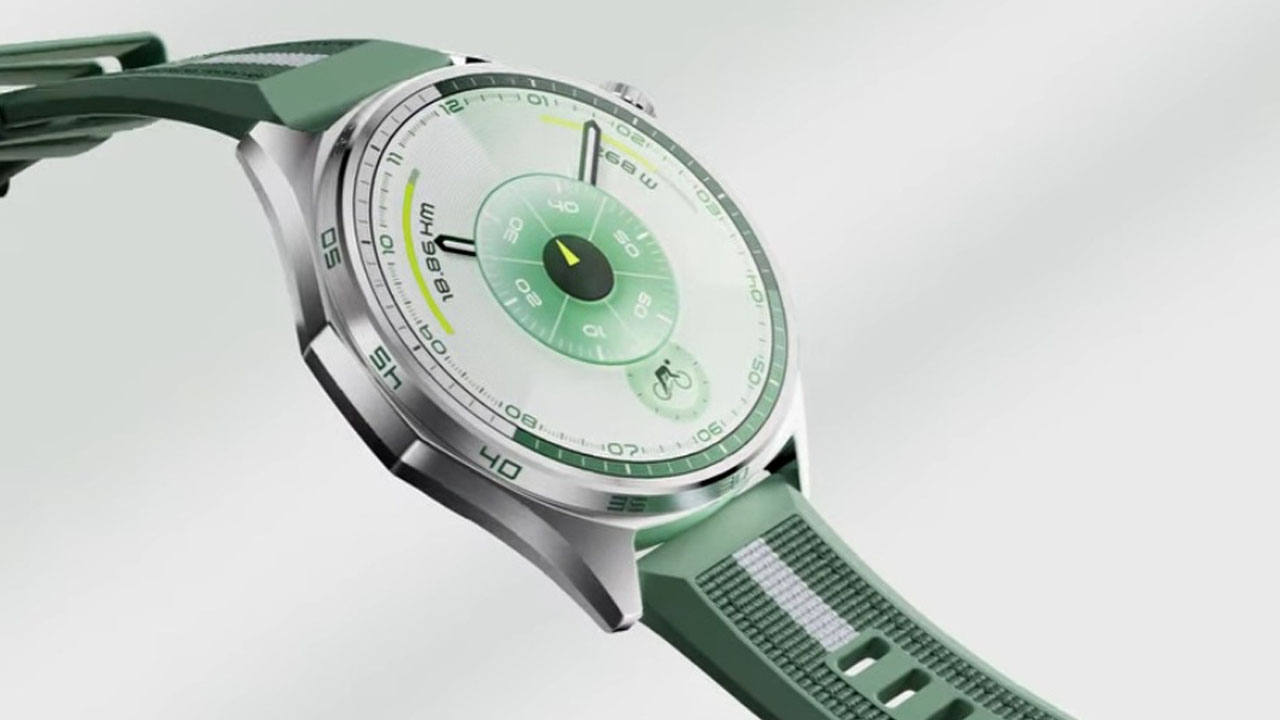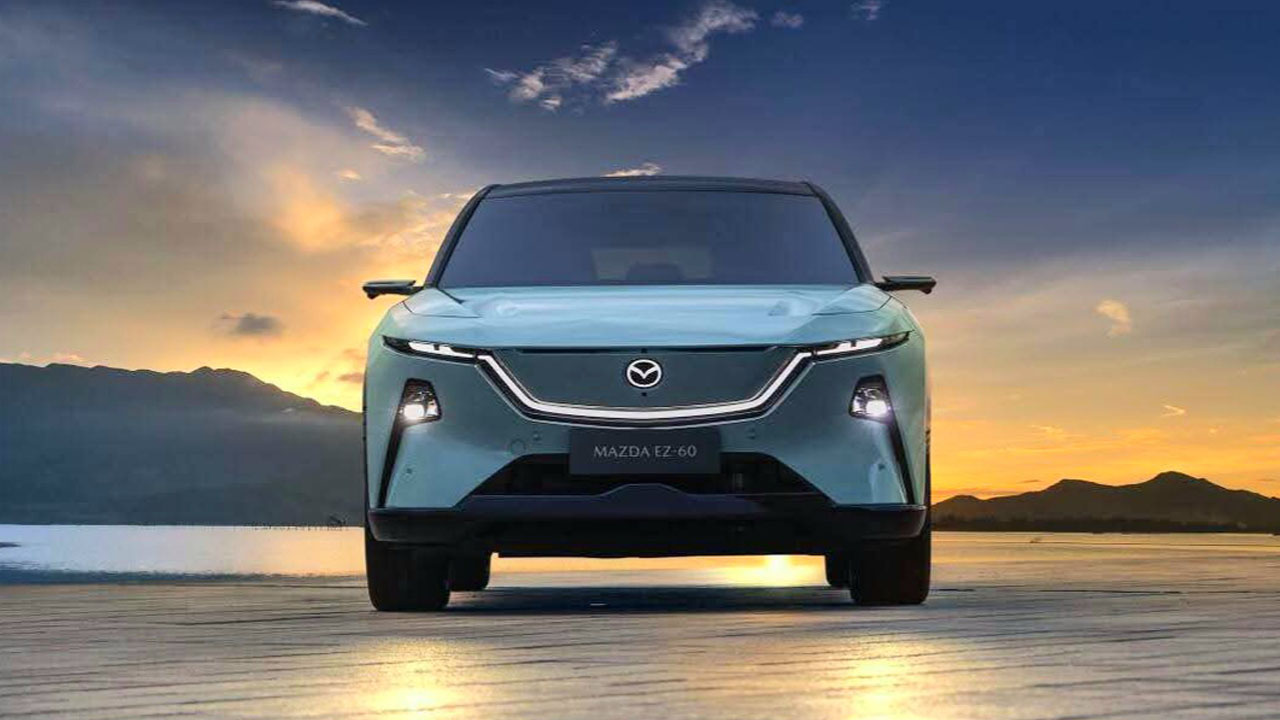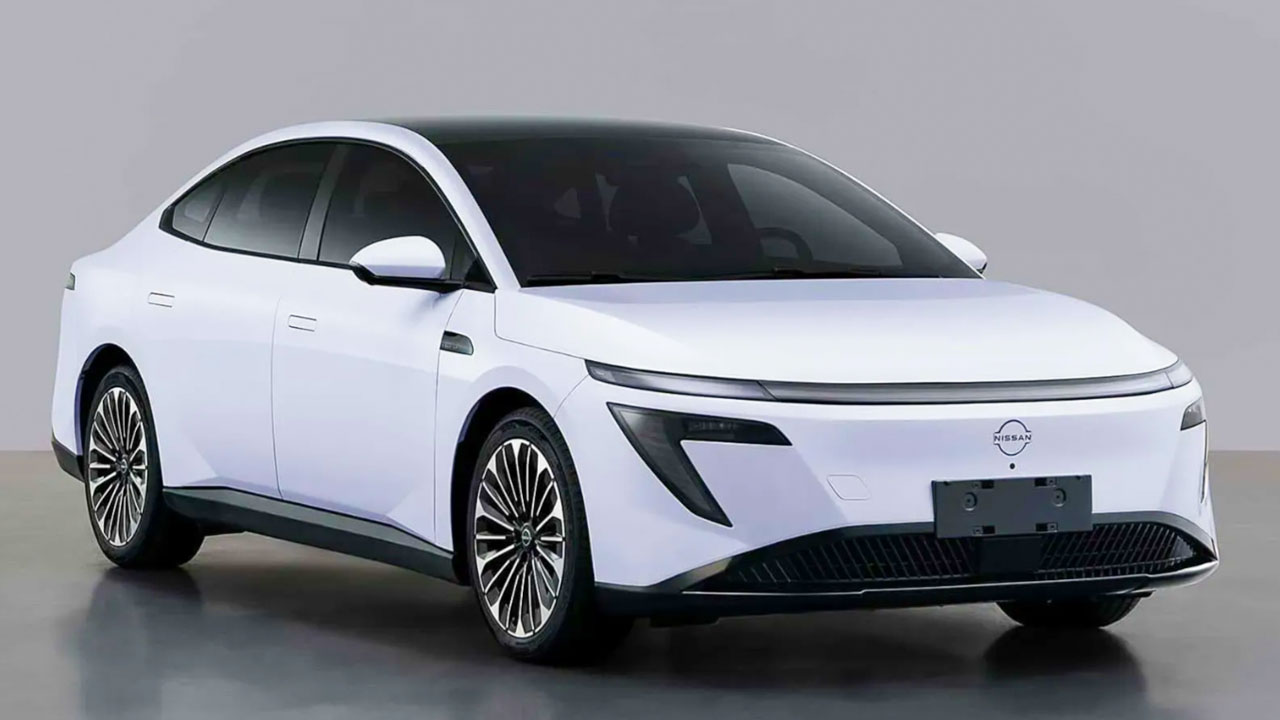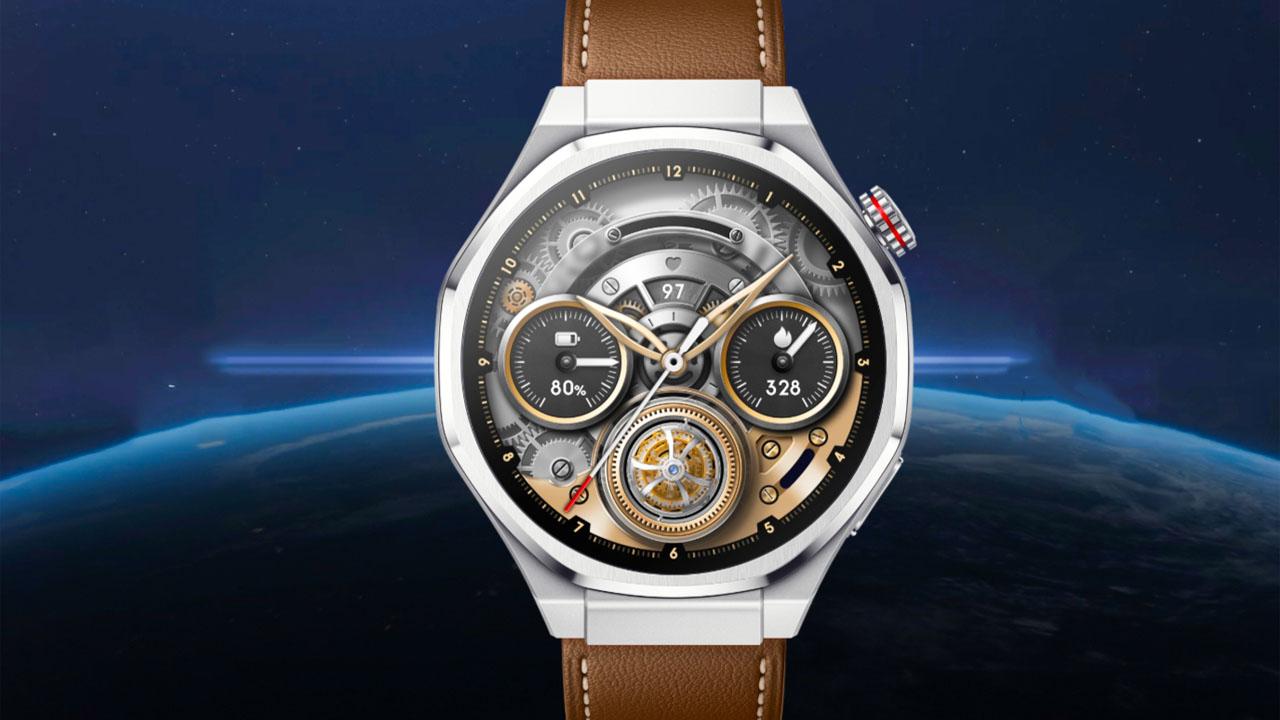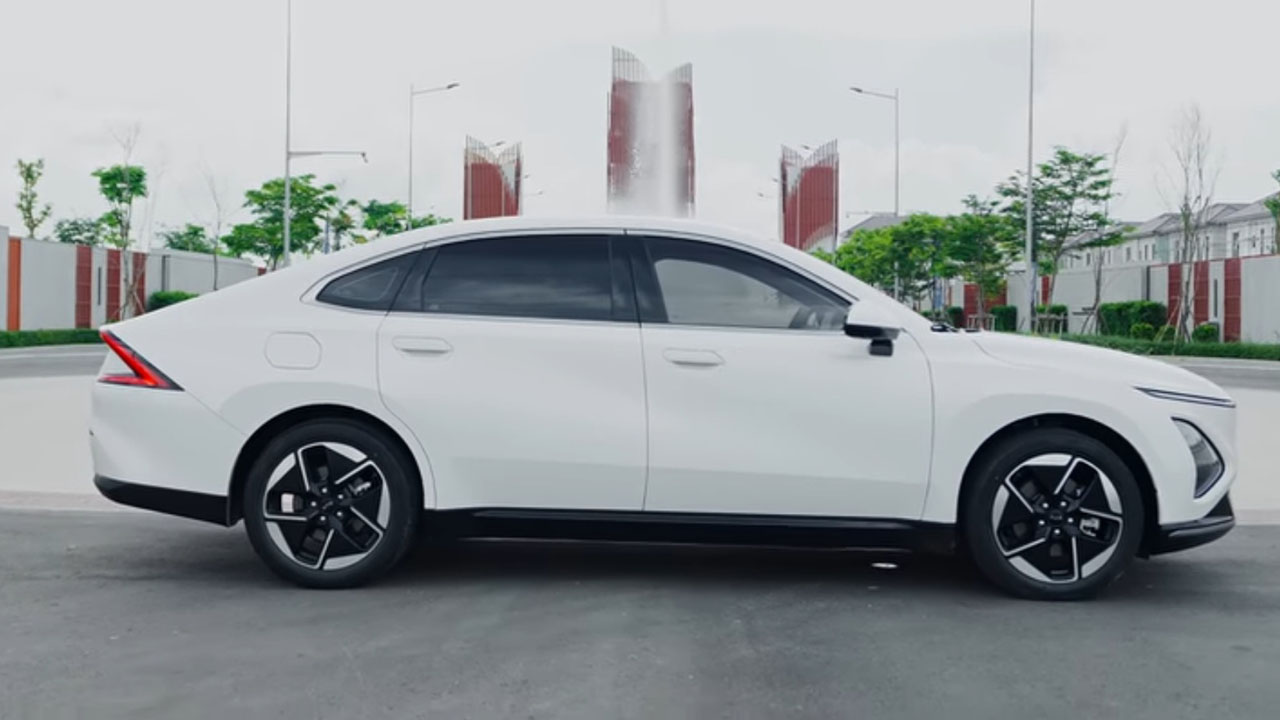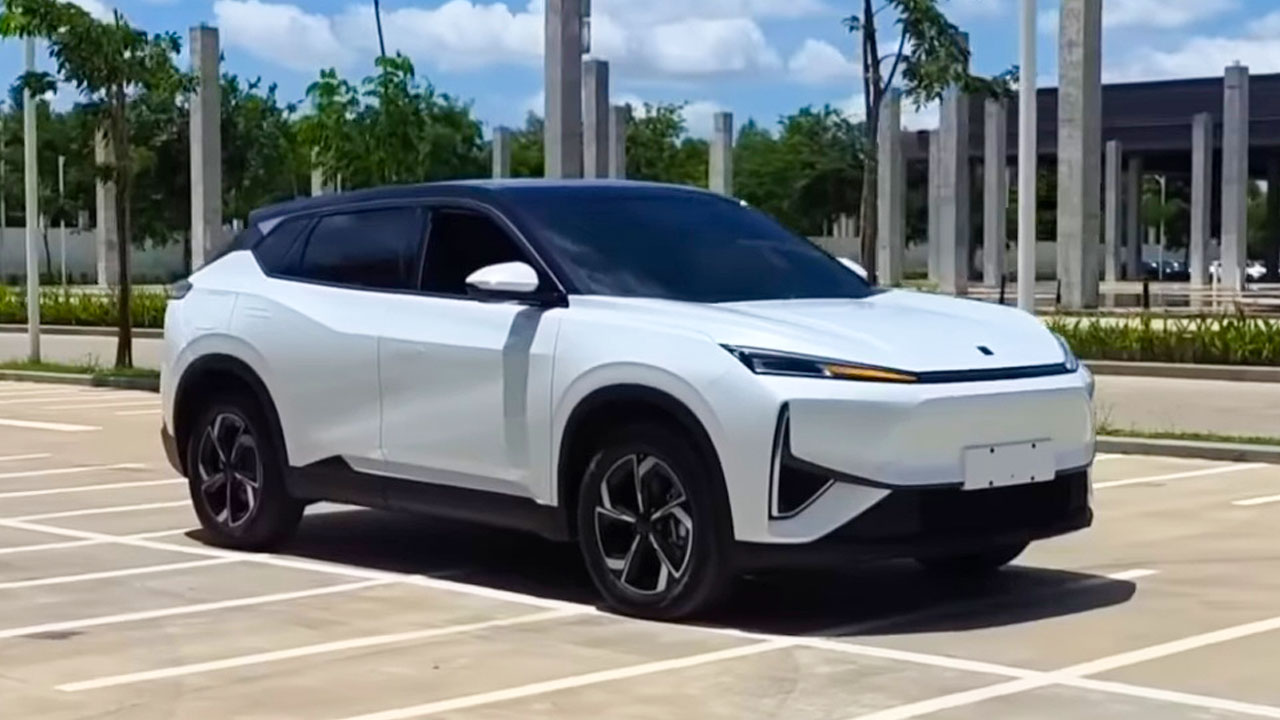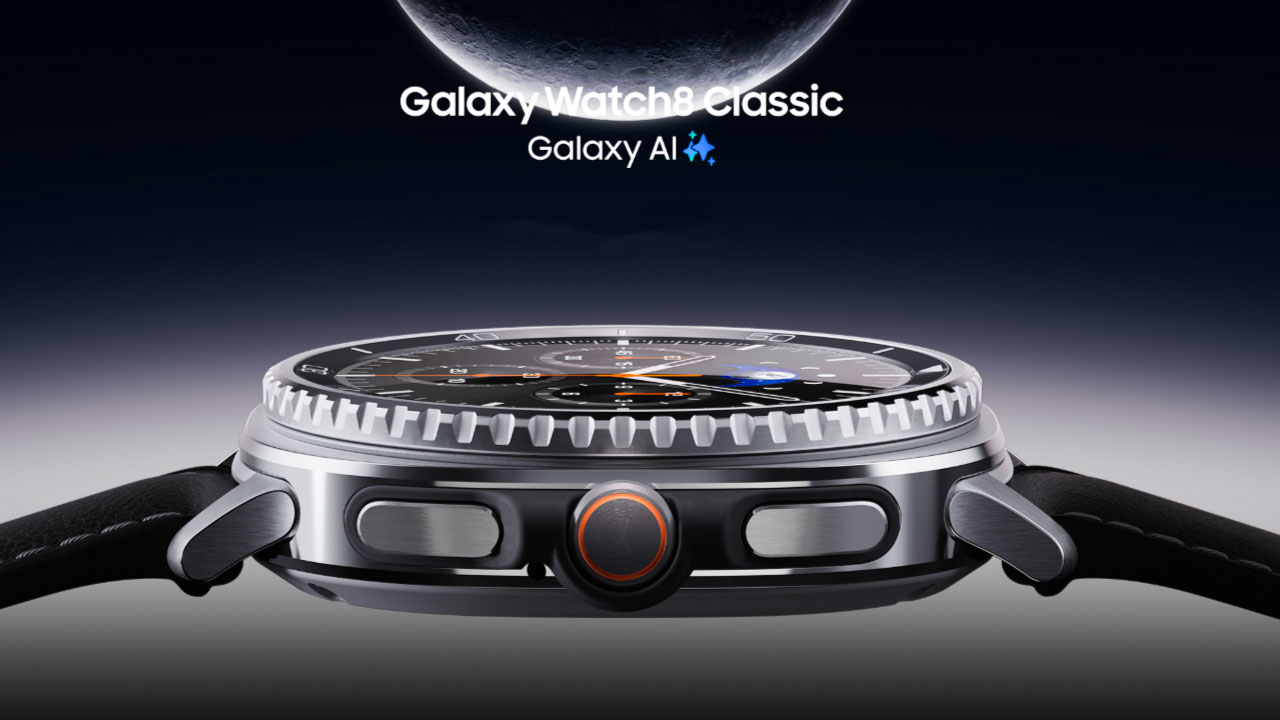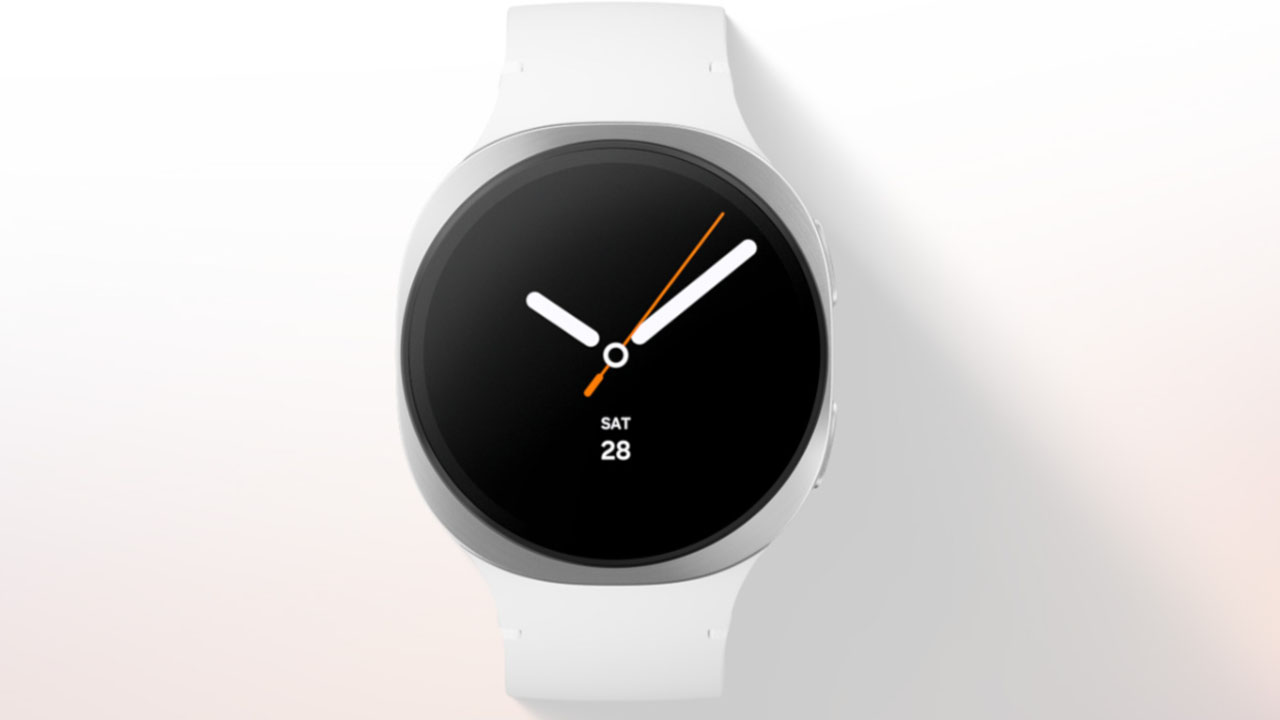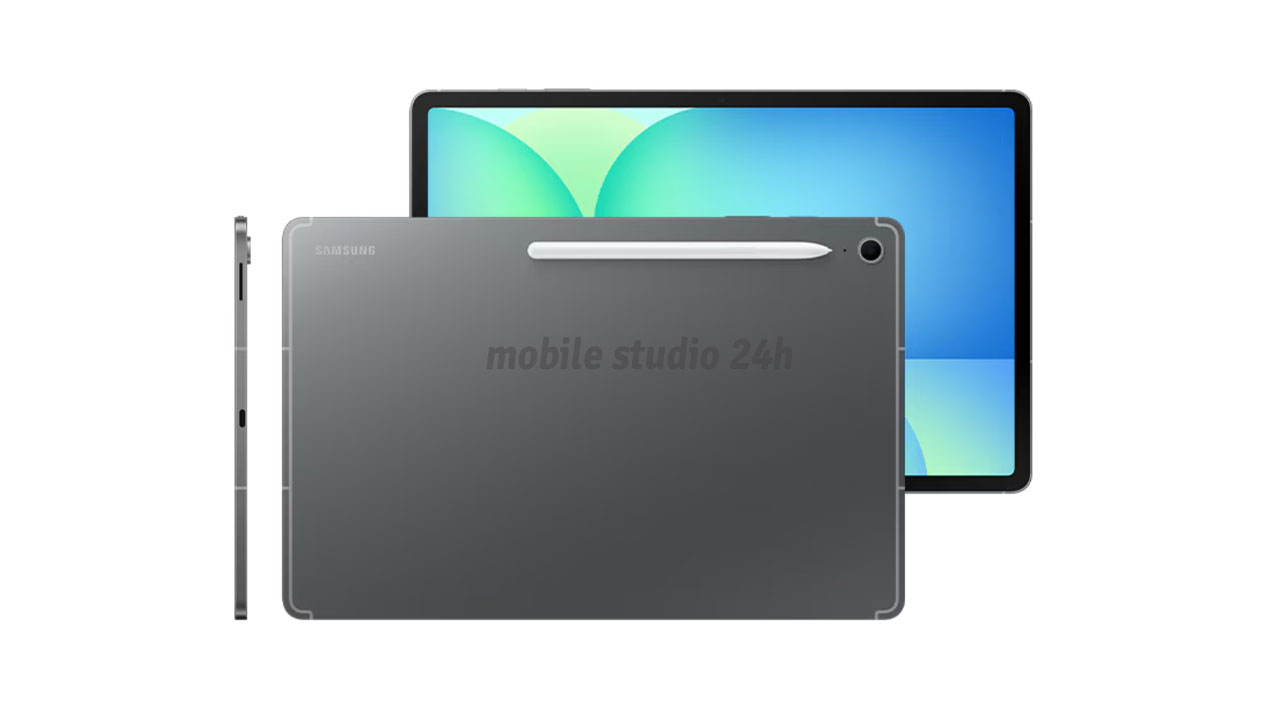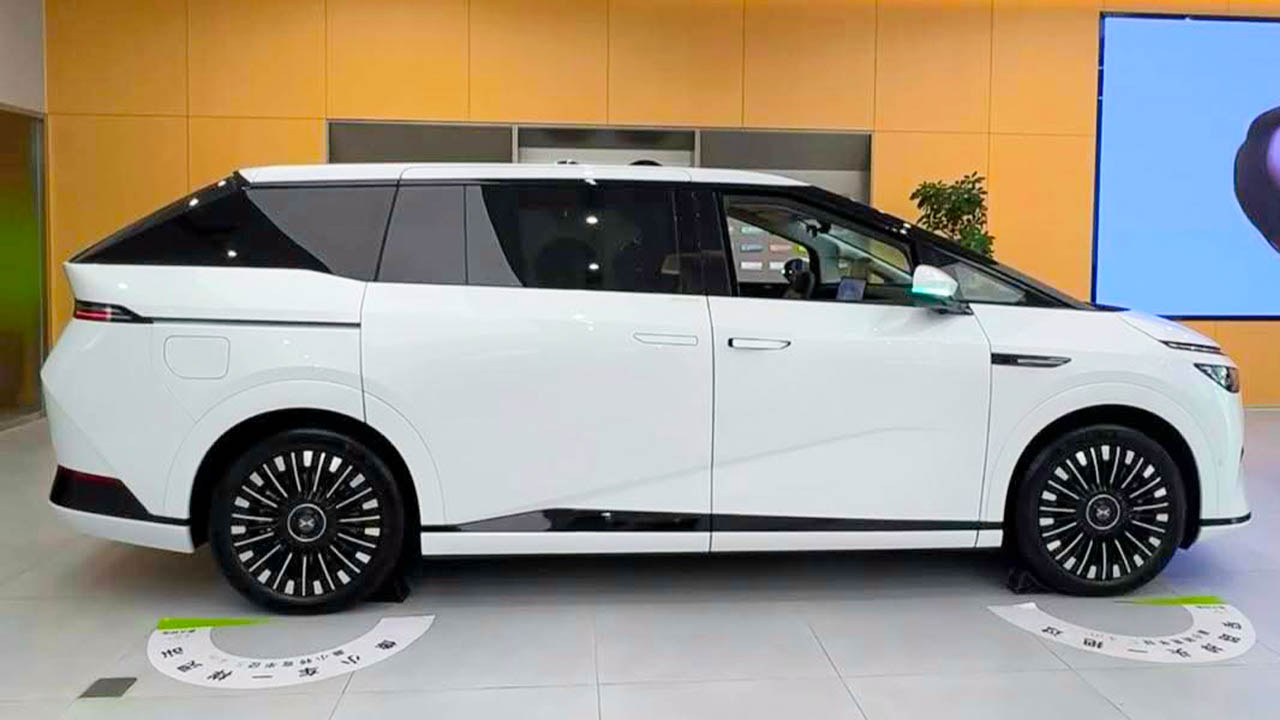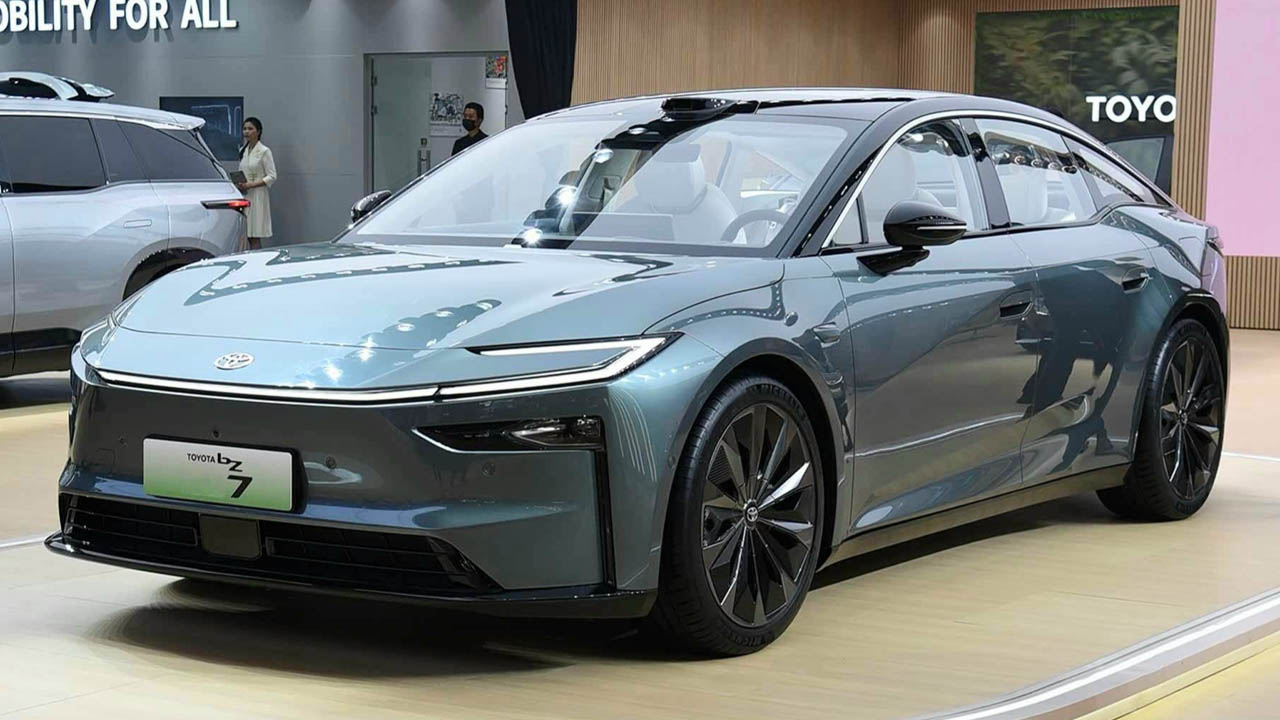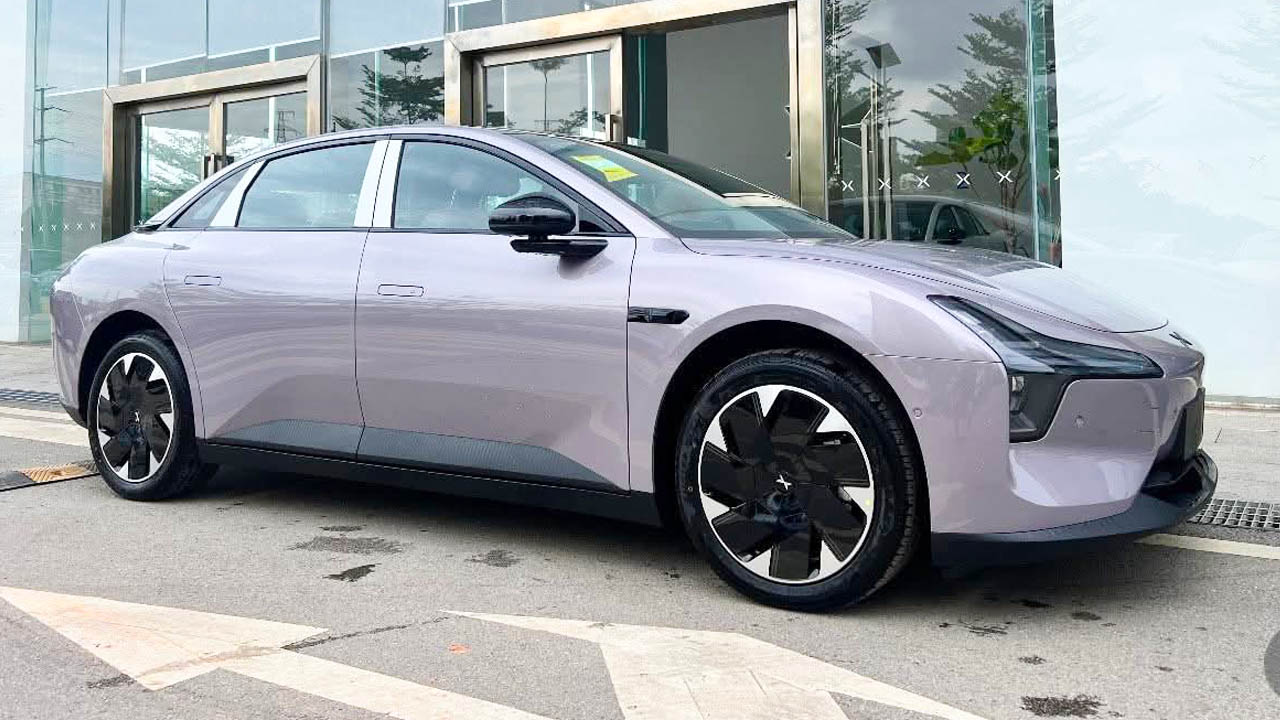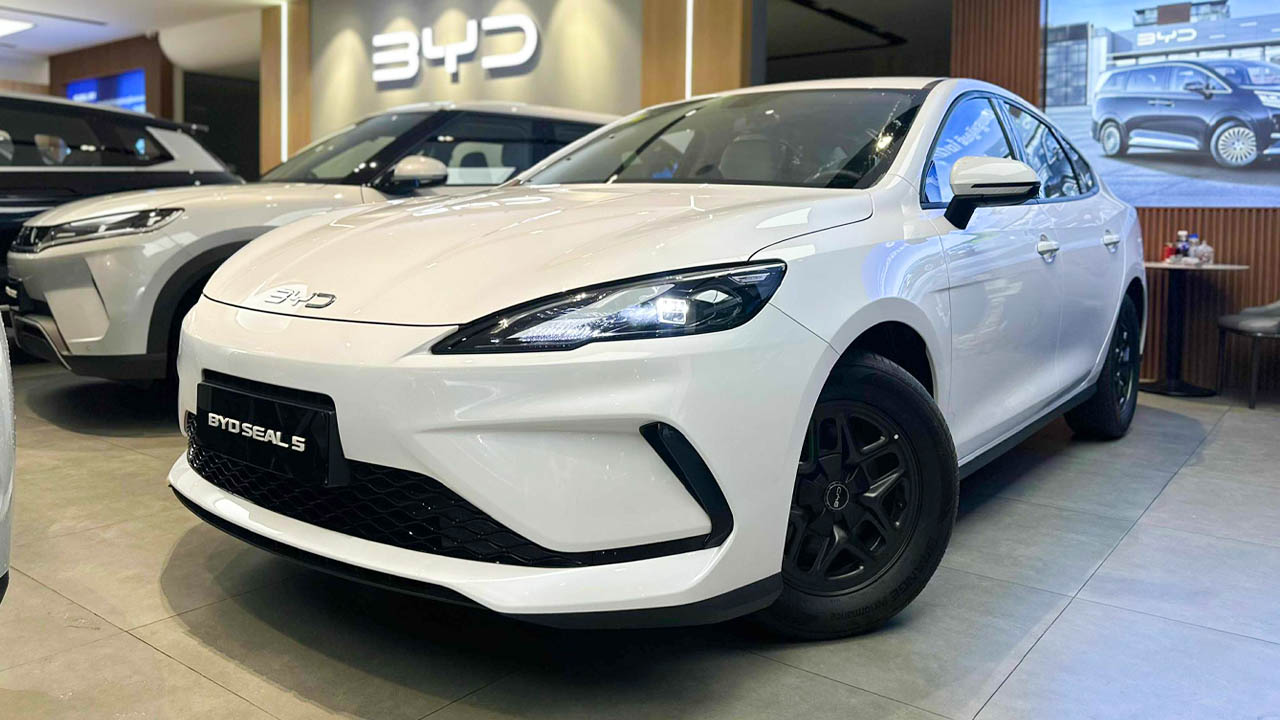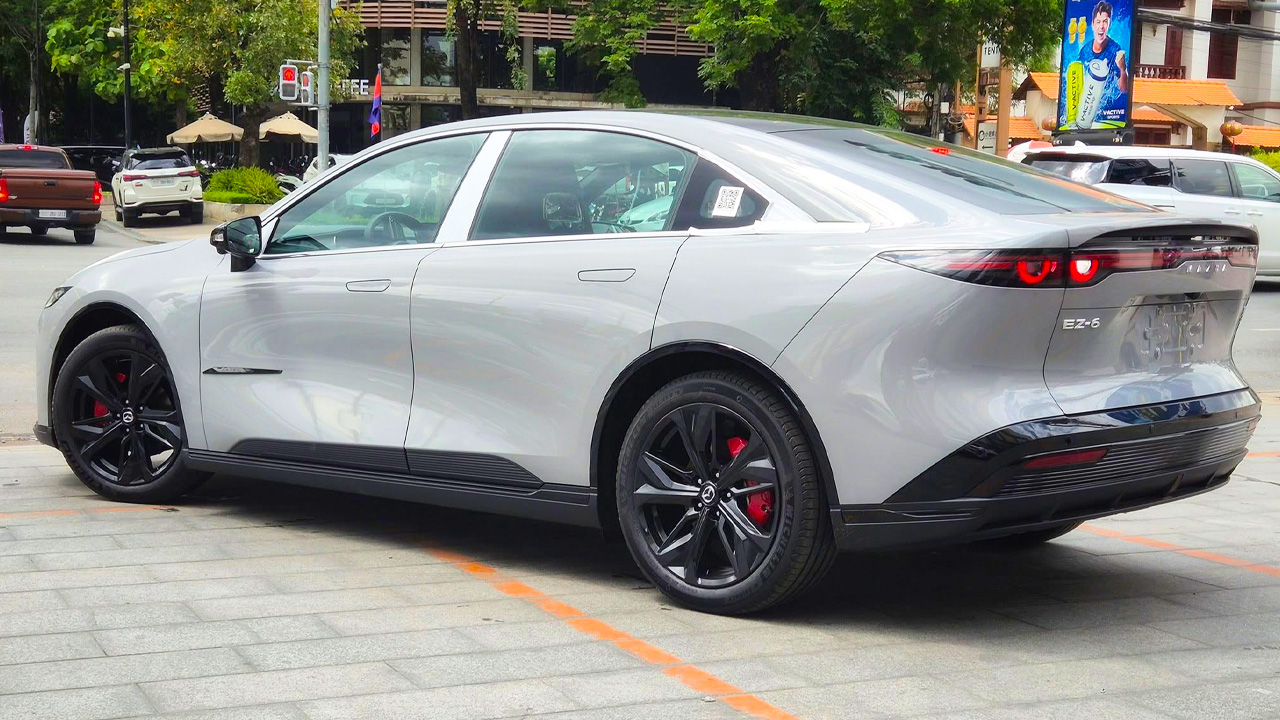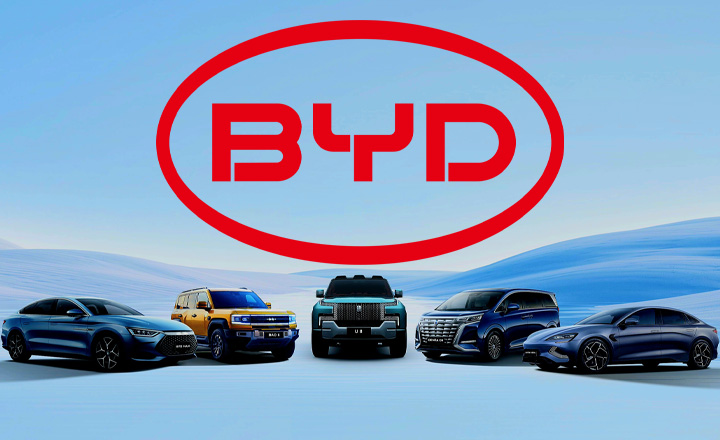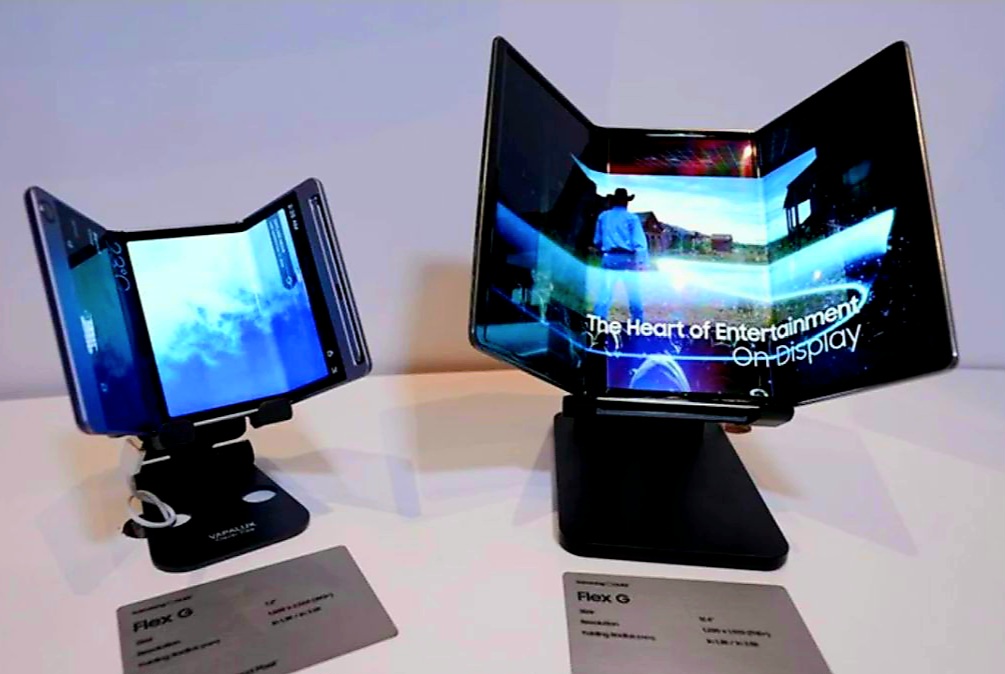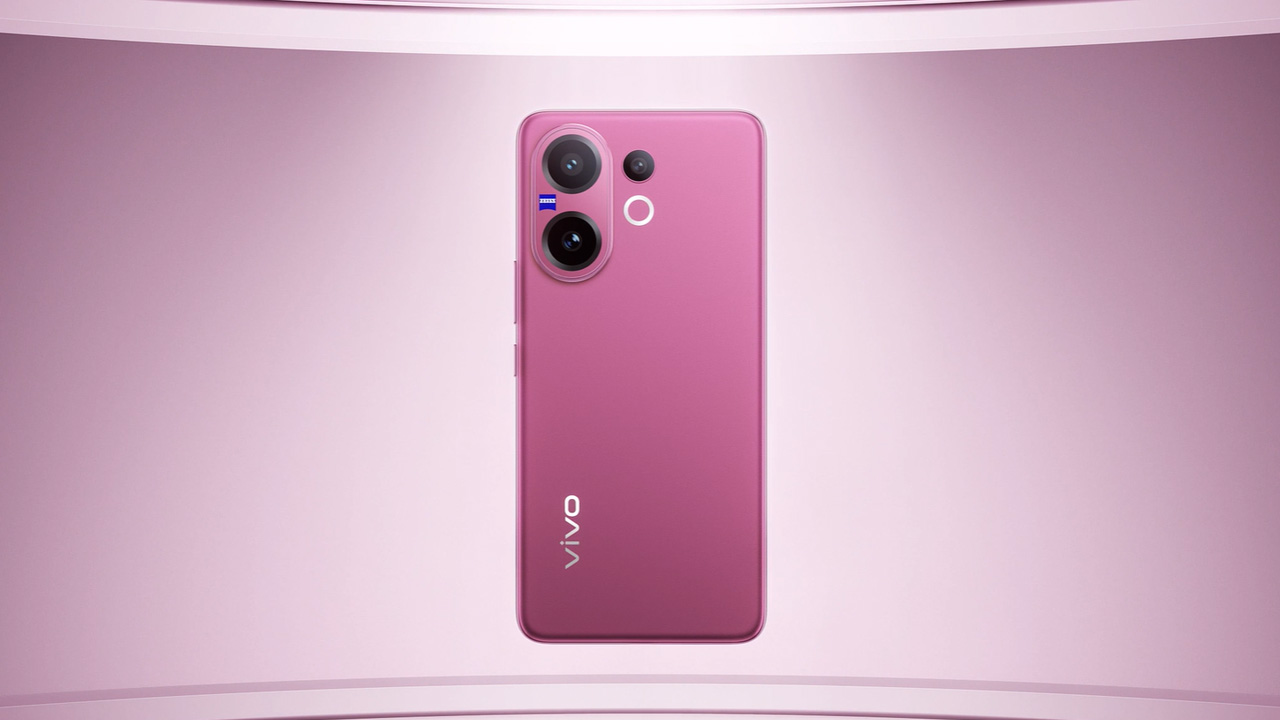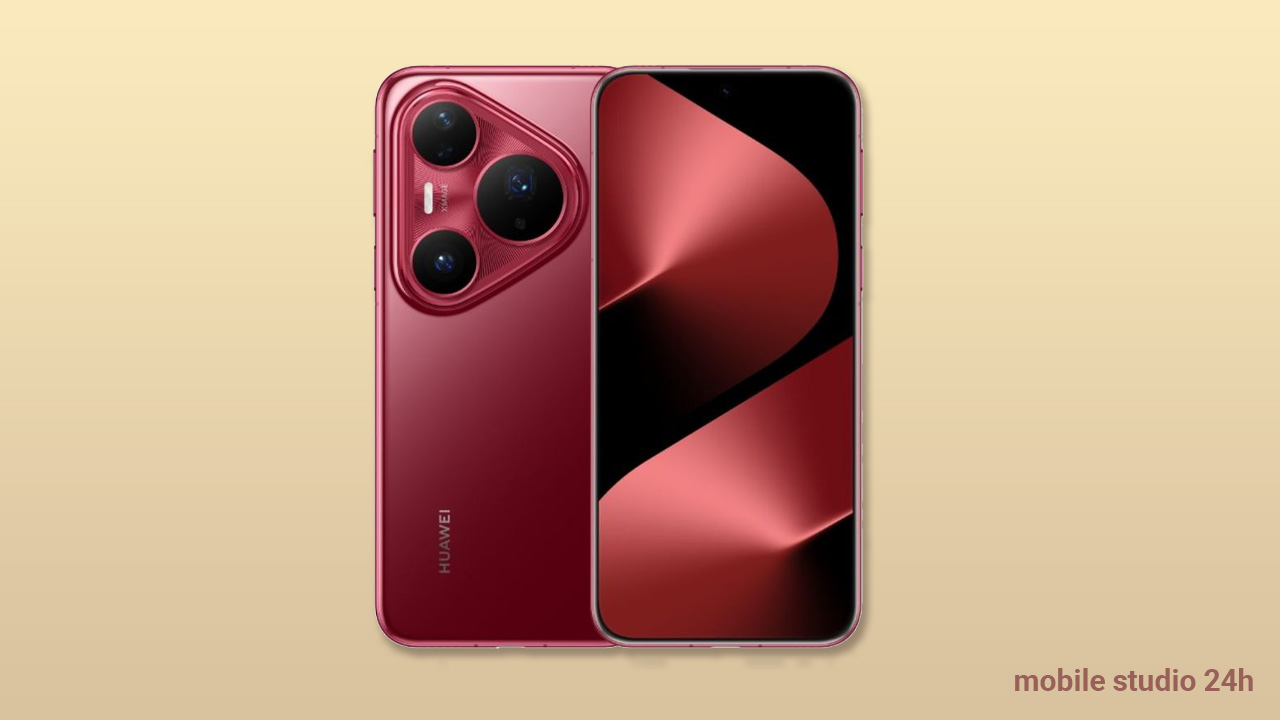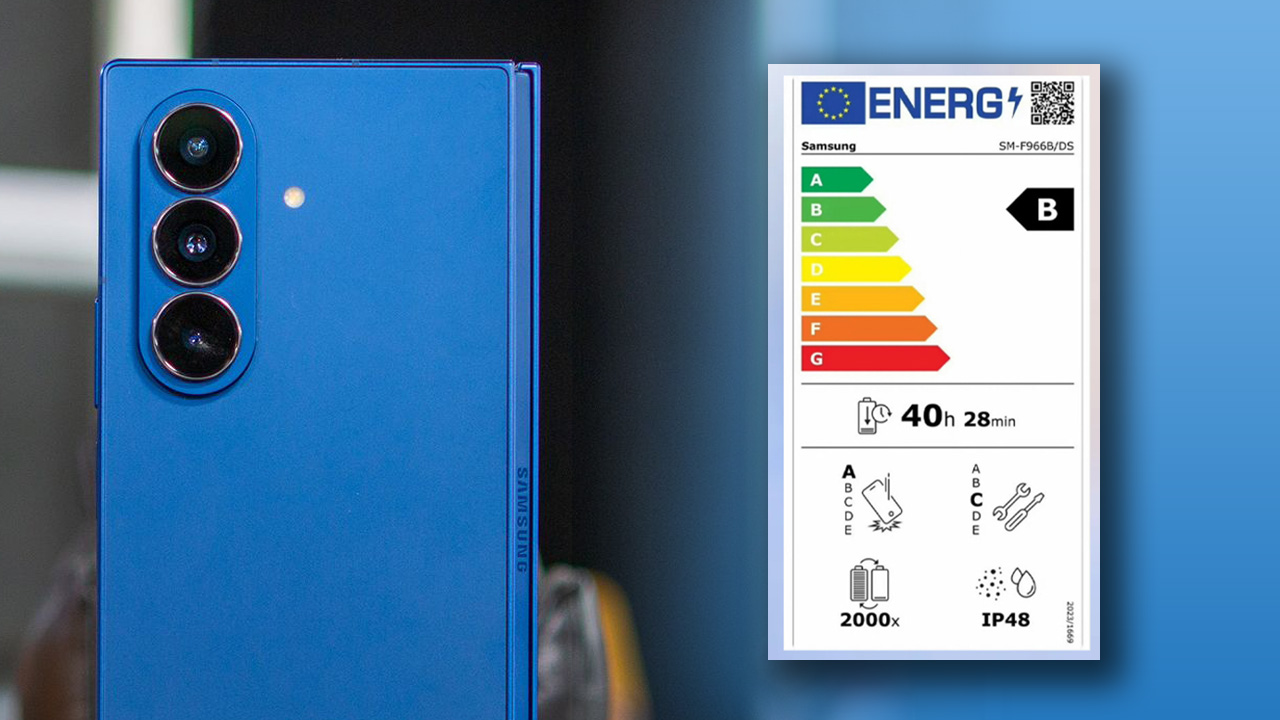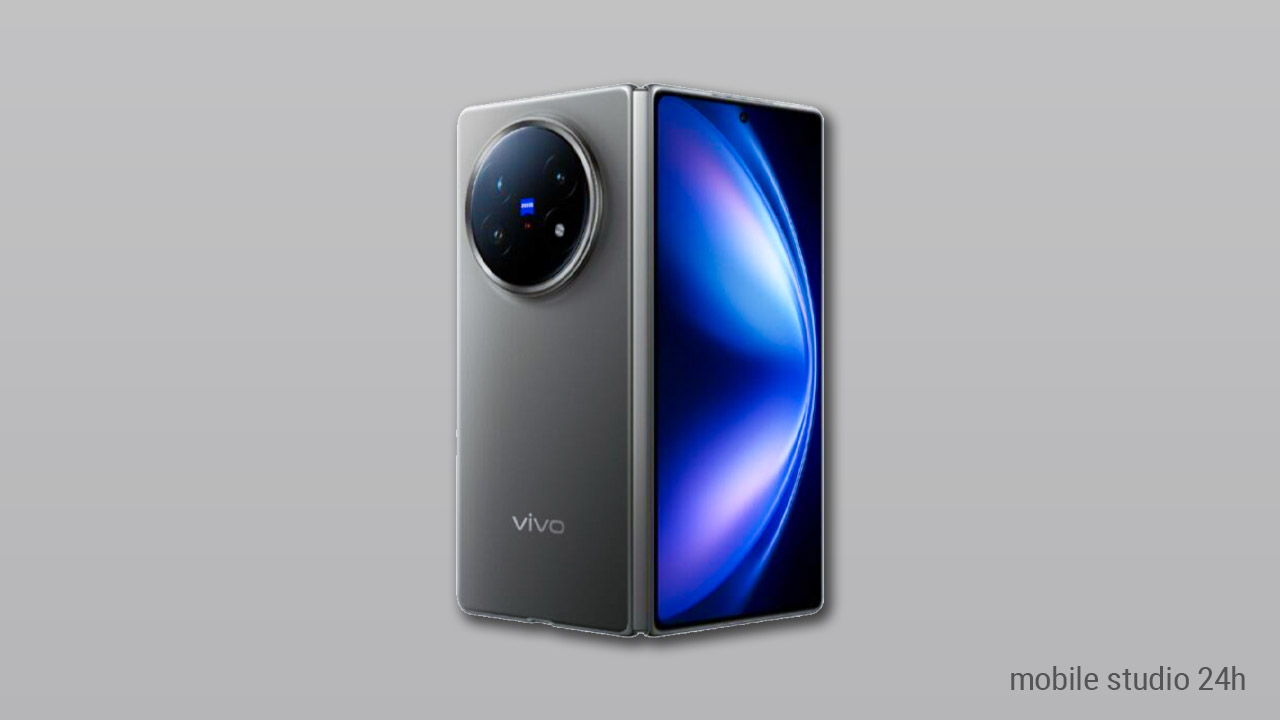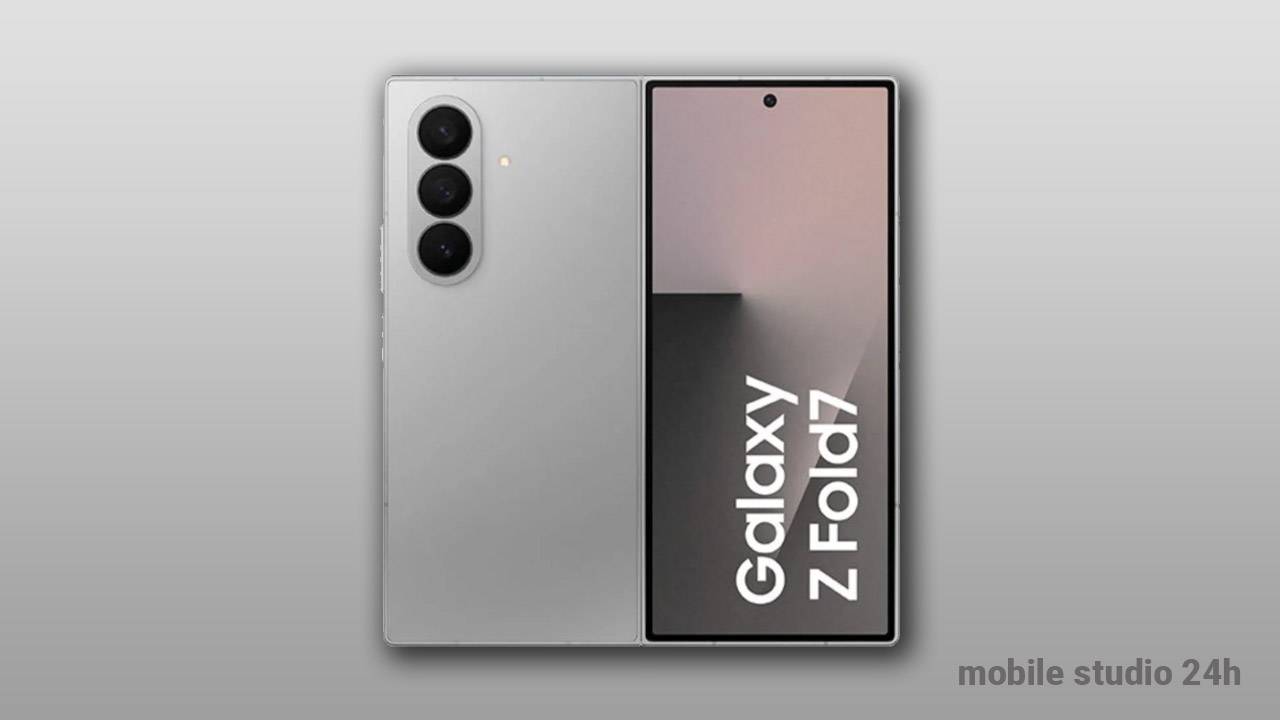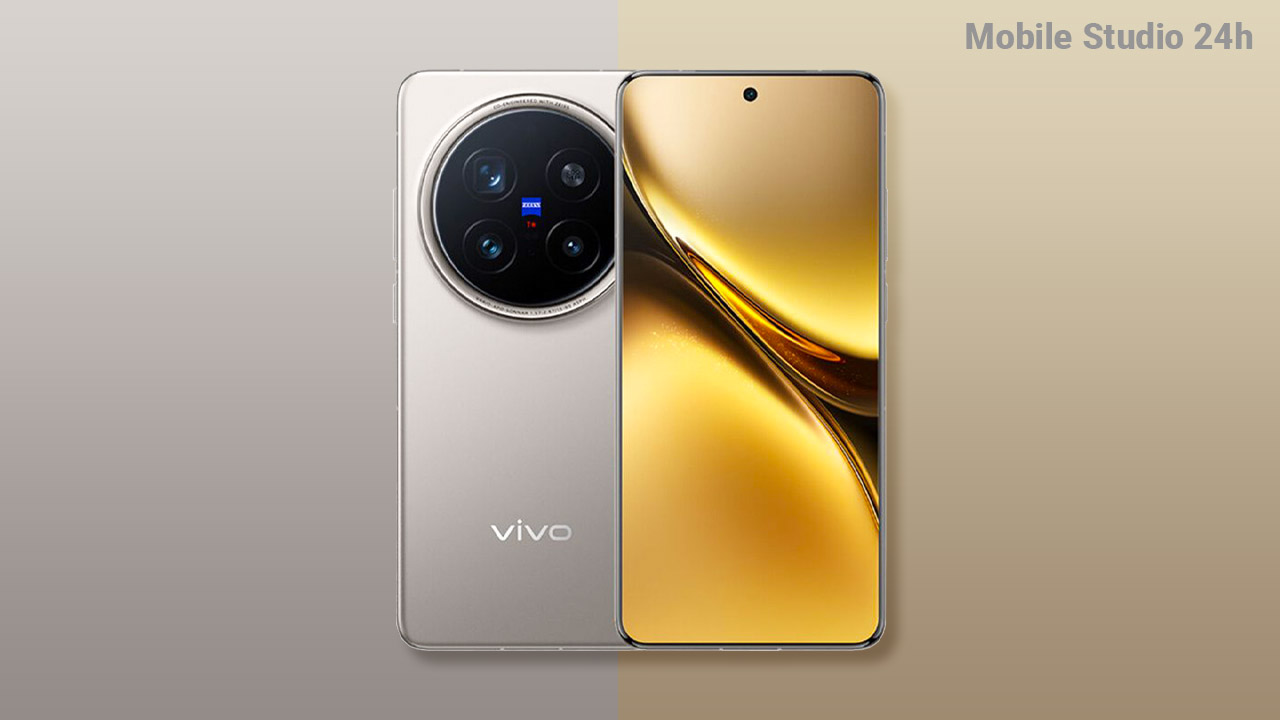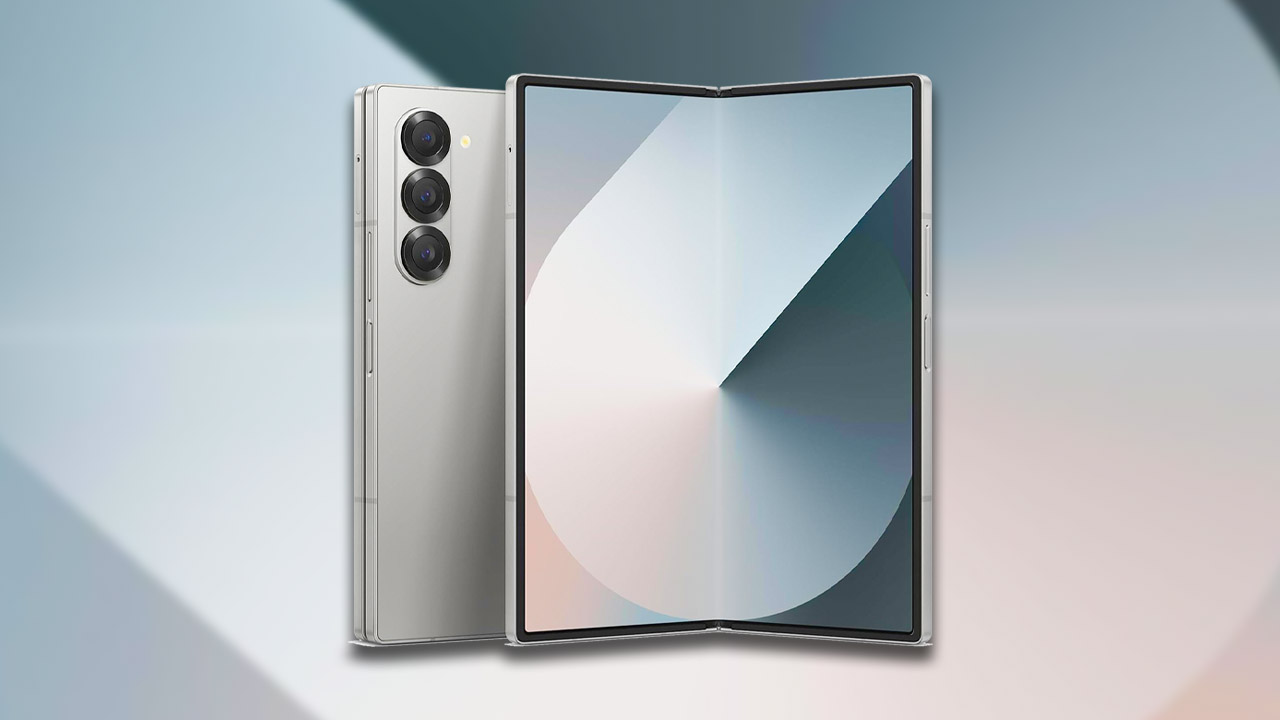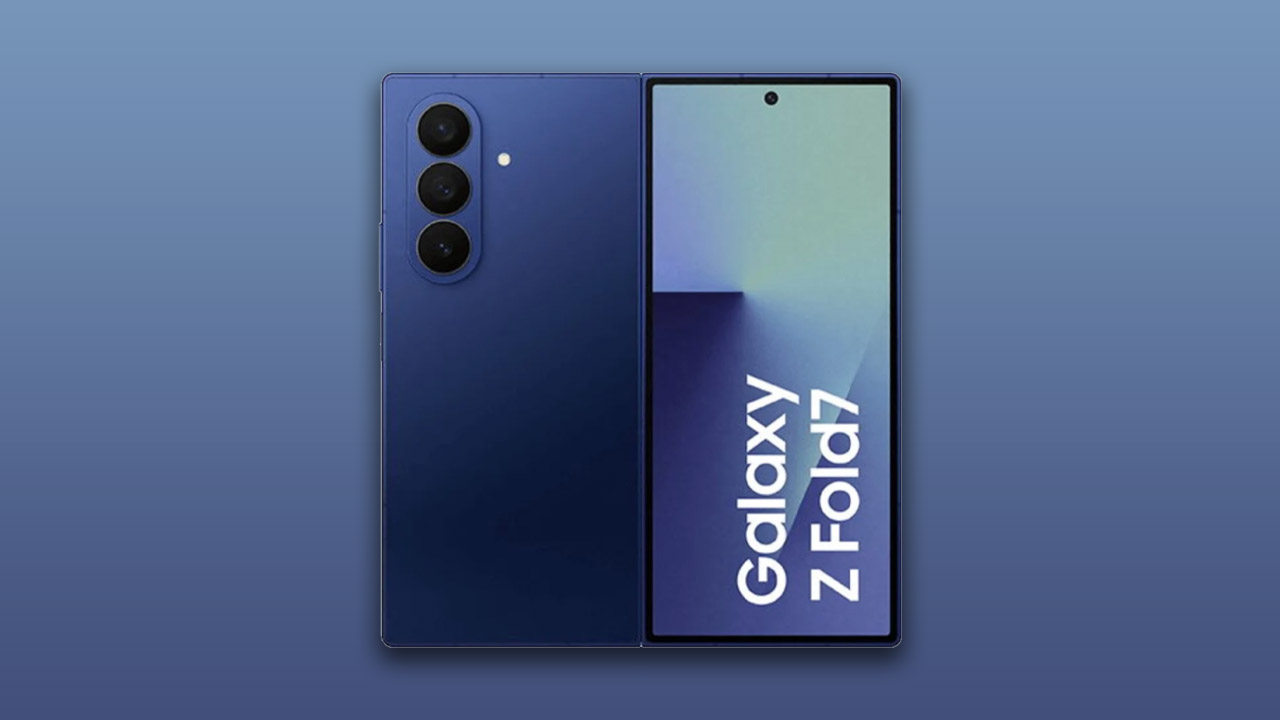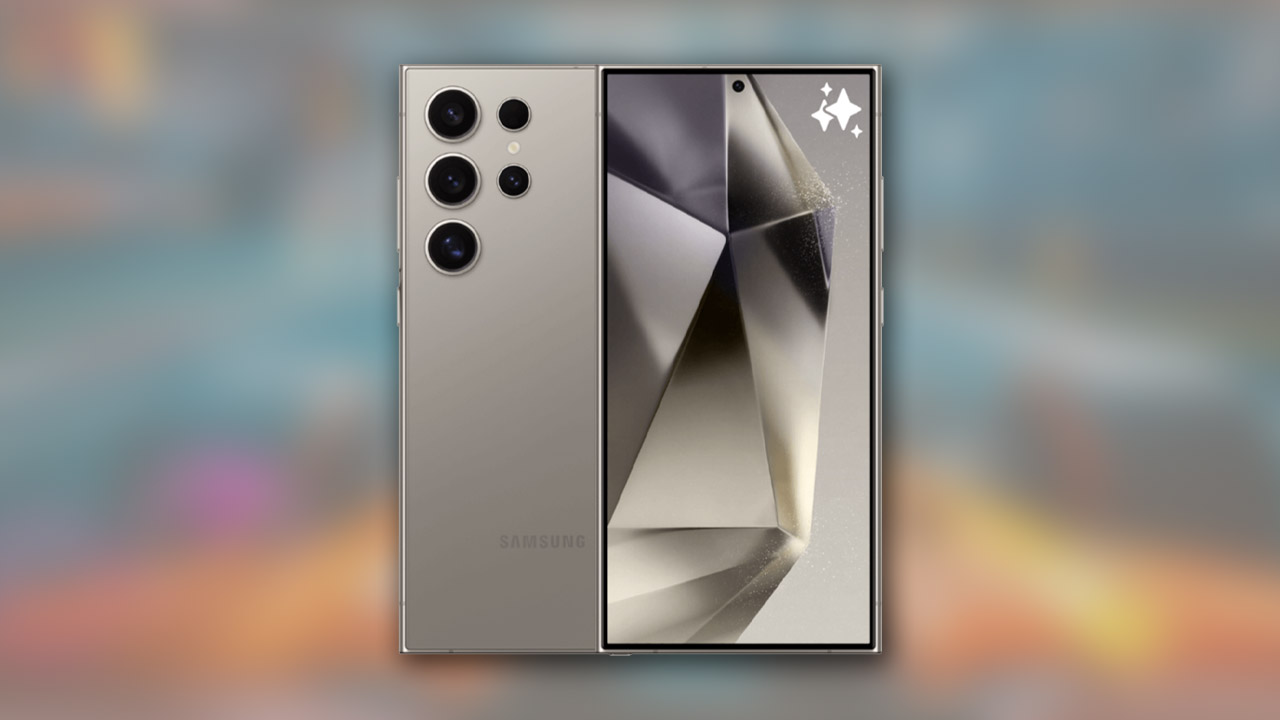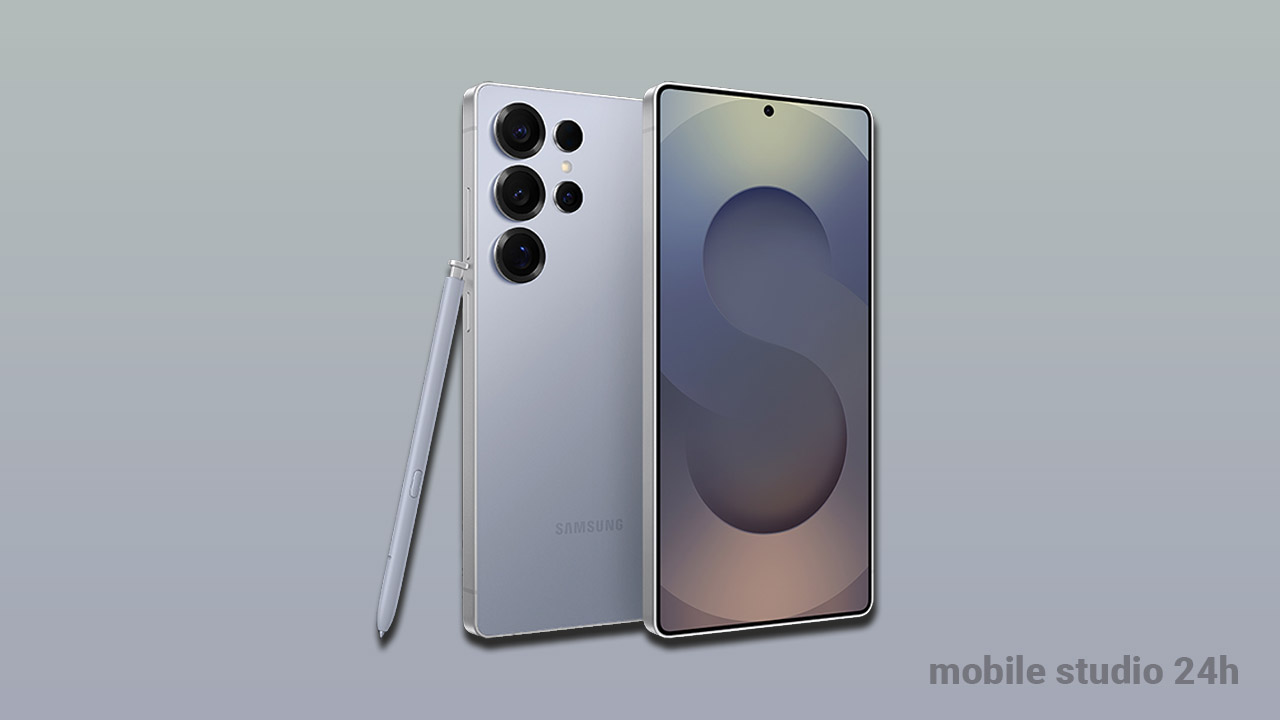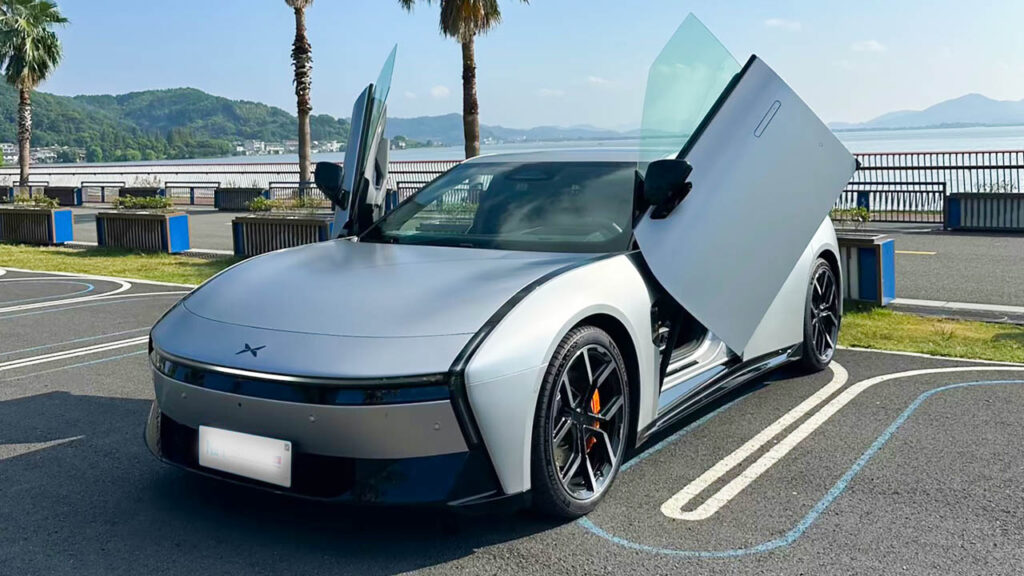
The Xpeng P7 has made a significant impact on the electric vehicle (EV) market, particularly in its home country of China, where it has achieved notable sales milestones. With a design that blends sleek aesthetics, a host of advanced technology, and competitive performance, the P7 has established itself as a strong contender in the electric sports sedan segment, often compared to rivals like the Tesla Model 3.
Exterior Design and Aesthetics
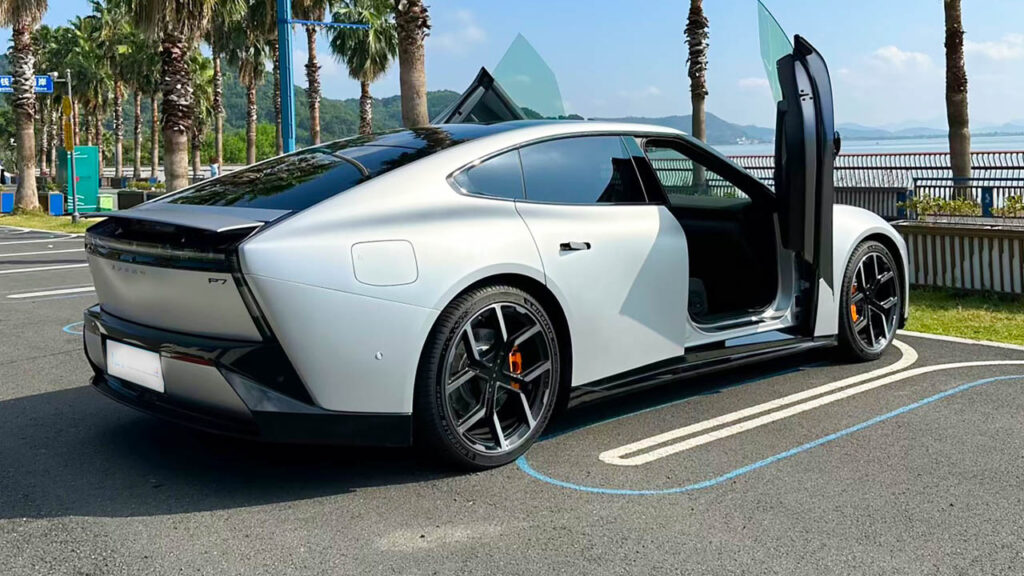
The Xpeng P7’s design is a key selling point, characterized by its long, low, and graceful silhouette. It embraces a “cyberpunk” aesthetic with a minimalist and futuristic approach. The car features Xpeng’s signature “X-BOT face,” which includes expressive, full-width LED light bars at the front and rear. Other design elements, such as hidden door handles and a flattened underbody, contribute to its impressive aerodynamic efficiency, with an ultra-low drag coefficient. The P7 also offers an optional “Wing Edition” with scissor doors, adding to its visual flair. Its fastback design, along with an active rear spoiler, gives it a sporty and dynamic look that sets it apart from more conventional sedans.
Interior and Technology
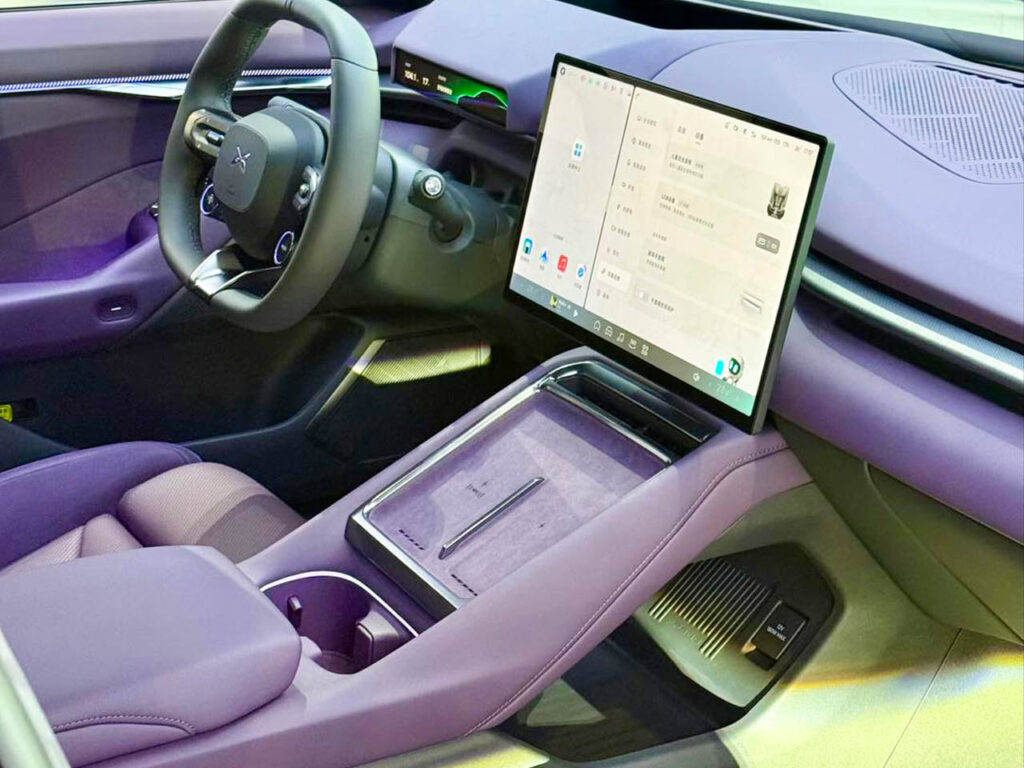
Stepping inside the Xpeng P7, you are greeted by a cabin that is both modern and luxurious. The interior has been completely overhauled in recent iterations, adopting a new design philosophy centered around technology and comfort. A large, floating central touchscreen and a digital instrument cluster dominate the dashboard. The P7’s infotainment system, powered by Xmart OS, is known for its intuitive 3D user interface and smart features. A standout technological feature is the massive, 87-inch augmented reality head-up display (AR-HUD), which is among the largest in its segment and provides real-time navigation and driver assistance overlays. The P7 also offers premium features like heated and ventilated sports seats, a Dynaudio sound system, and a comprehensive suite of advanced driver assistance systems (ADAS).
Performance and Range
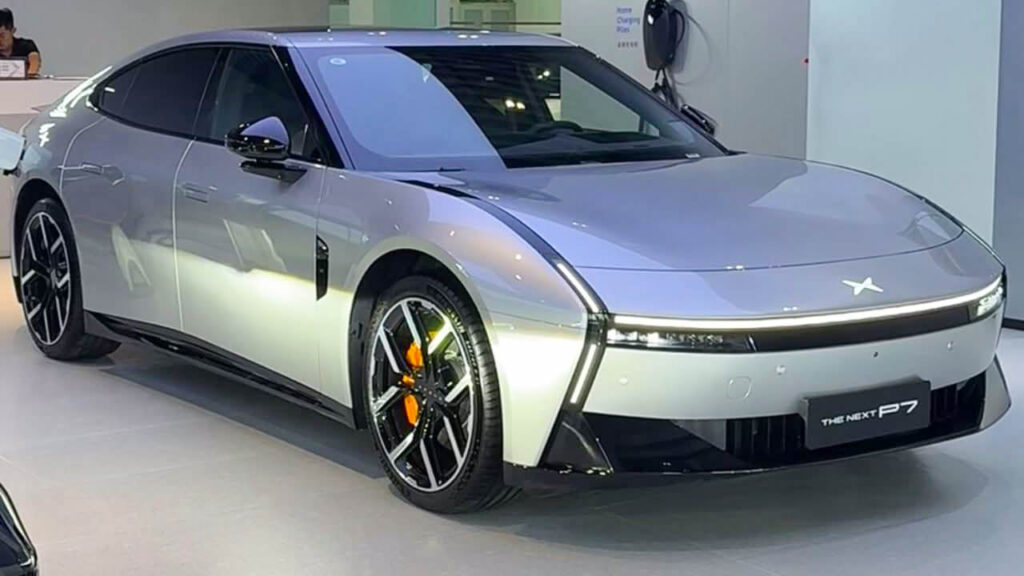
The Xpeng P7 offers various powertrain configurations to suit different needs. The rear-wheel-drive (RWD) versions provide a balance of power and efficiency, while the dual-motor all-wheel-drive (AWD) variants deliver exhilarating performance. The AWD version can produce a combined output of over 400 horsepower, allowing for a 0-100 km/h acceleration time in as little as 3.7 seconds.
In terms of range, the P7 is highly competitive, with a variety of battery options offering a range of up to 820 km on the CLTC standard. The car supports both AC and DC fast charging. With an 800V silicon carbide (SiC) high-voltage architecture, the P7 is capable of rapid charging, allowing it to regain a significant amount of range in a short period. For instance, it can add over 500 km of range in just 10 minutes at a 5C charging station.
Driving Experience and Safety
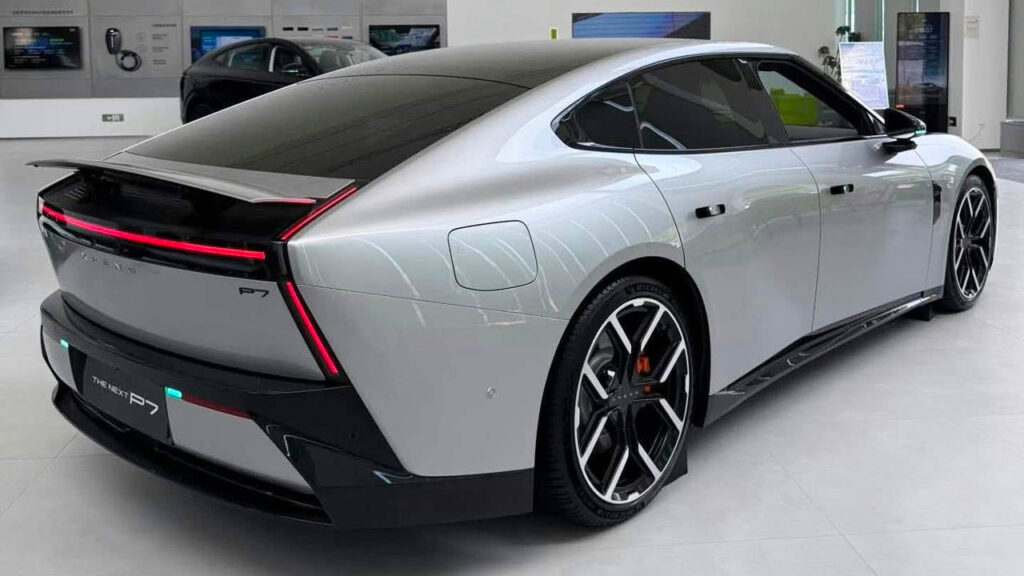
The driving experience of the Xpeng P7 is often described as a blend of sportiness and executive comfort. While its acceleration is impressive, the suspension system (double-wishbone front and multi-link rear) is tuned to provide a smooth and relaxing ride, making it suitable for both daily commuting and long-distance travel. The P7 is equipped with the advanced XPILOT ADAS, which uses a combination of cameras, radars, and sensors to provide features like highway and city street navigation-guided pilot functions. This system, powered by the company’s in-house developed AI chips, contributes to a safer and more convenient driving experience.
Conclusion
The Xpeng P7 is a compelling electric sedan that successfully combines stunning design, cutting-edge technology, and strong performance. It has cemented Xpeng’s reputation as a leader in the EV space, showcasing a vehicle that is not just about getting from point A to B, but about an immersive and intelligent driving experience. With its impressive range, rapid charging capabilities, and a cabin packed with futuristic features, the P7 presents a formidable challenge to established players and is a testament to the rapid evolution of Chinese electric vehicles.
